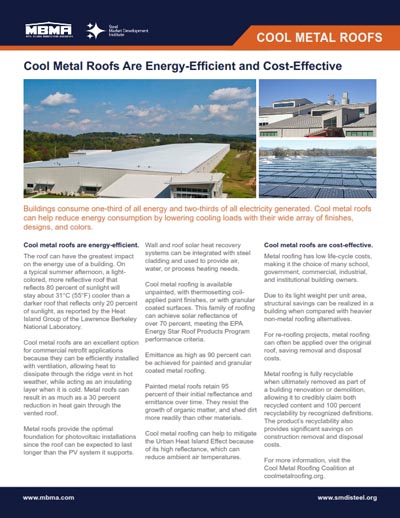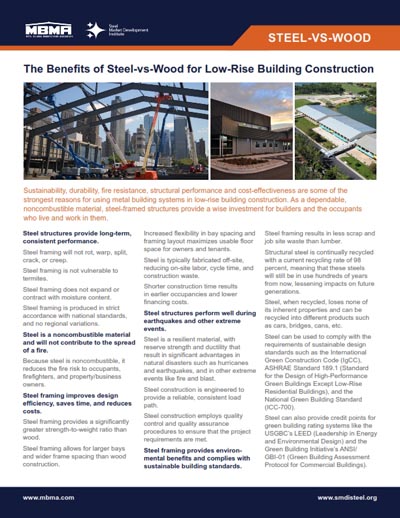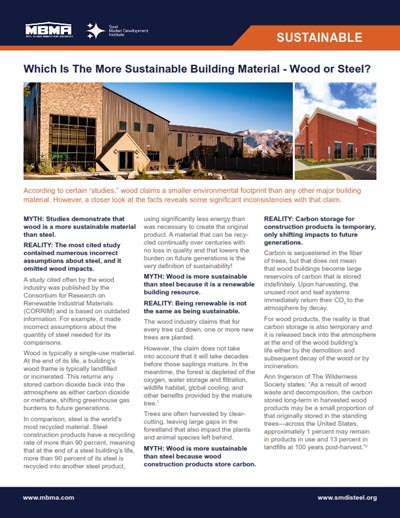
MBMA's members are deeply committed to the social, environmental and economic principles of sustainability. This pledge is aimed at improving the quality of life for everyone now without compromising the ability of future generations to meet their own needs.
MBMA members have taken direct action to improve the energy and environmental performance of its building systems products, manufacturing operations, packaging and shipment, and construction of the building and to work within the broader steel industry.
We provide below three resource documents to help explain the sustainable attributes of metal building systems.

Cool Roofs - Buildings consume one-third of all energy and two-thirds of all electricity generated. Cool metal roofs can help reduce energy consumption by lowering cooling loads with their wide array of finishes, designs, and colors.

Steel vs. Wood - Sustainability, durability, fire resistance, structural performance and cost-effectiveness are some of the strongest reasons for using metal building systems in low-rise building construction. As a dependable, noncombustible material, steel-framed structures provide a wise investment for builders and the occupants who live and work in them.

Which is more sustainable? Steel vs. Wood - According to certain "studies", wood claims to have a smaller environmental footprint than any other major building material. However, a closer look at the facts reveals some significant inconsistencies with that claim.
Additionally, MBMA released a continuing education course, Sustainable Metal Buildings, which investigates the design flexibility, inherent efficiencies and general characteristics of metal buildings that contribute to them being sustainable by nature. A PDF of this course is available here.
